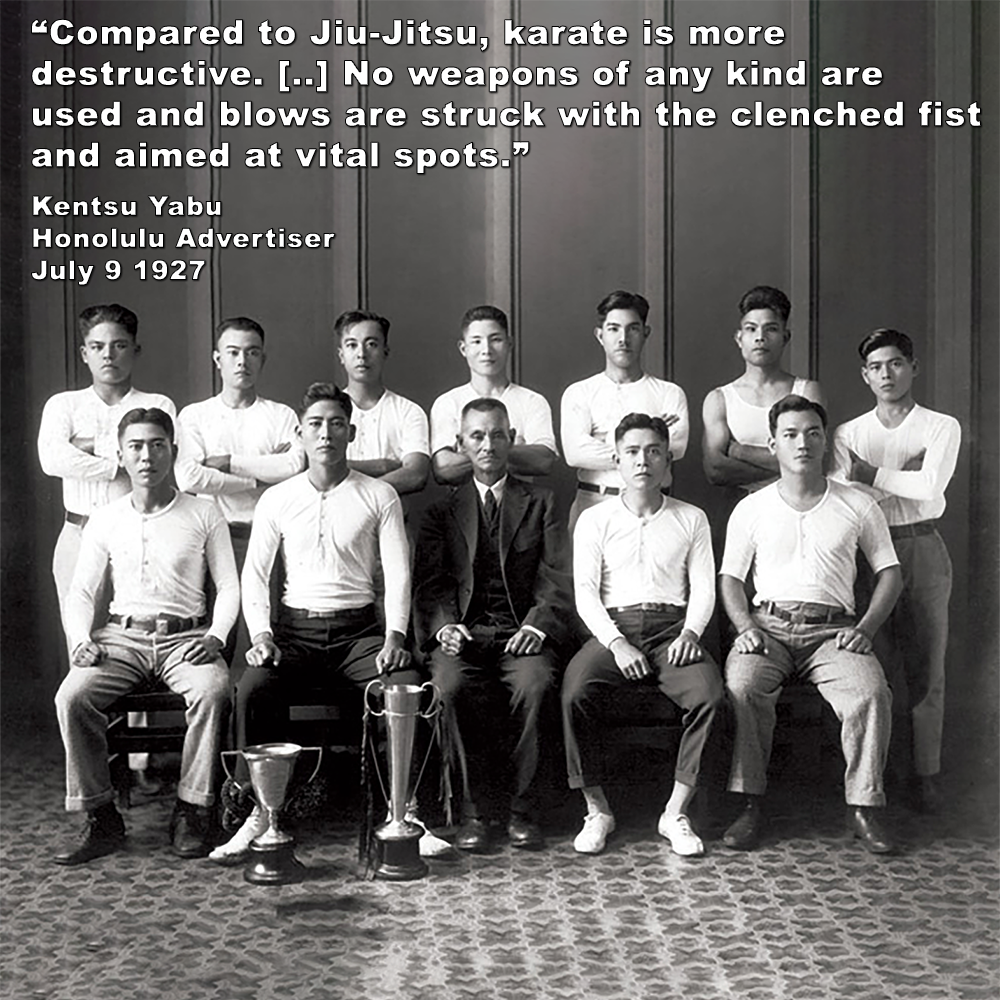
"Compared to Jiu-Jitsu, karate is more destructive." - Kentsu Yabu
Posted by ADAM CARTER on JUN 28, 2024

"Compared to Jiu-Jitsu, karate is more destructive." - Kentsu Yabu
(Approx 1 minute 55 second read)
There is a significant difference between consensual fights and non-consensual criminal violence. Yabu sensei, a karate pioneer, lived in a time when karate was geared towards real-world self-defense, not consensual sport fighting.
If your interest and practice is pragmatic karate for self-defense, then your primary goal should be to escape and reach safety.
I often receive comments on my articles stating that taking an enemy to the ground to prevent them from fighting further is the best option.
For self-defense, this option is not the best. Why?
If your priority is escape and getting to safety, you need to stay on your feet to use strikes if necessary, creating space and confusion. Deliberately taking someone to the ground is a bad idea, as it immediately removes your ability to escape and leaves you vulnerable to attack by others.
It’s not guaranteed you will be able to escape of course, but that’s the best tactic to try and employ, and there are skills associated with it. It’s not enough to simply say, “run away” and think you’ve covered it all.
Of course, you may end up on the ground, but fighting to get back on your feet should be your priority.
This is not to say you don’t need techniques for fighting on your back if you find yourself there. But the ground should never be a choice or preference, even if others are not immediately involved, because they can become involved very quickly, with devastating results.
Anything that makes you more vulnerable to further attack should be avoided. If the worst happens and you do end up on the ground, you need the skills to deal with it, so practicing skills to ‘get up’ are essential, not to stay there trying to apply techniques better suited for the mat.
Choosing anything other than escape, or doing anything that makes escape harder, guarantees moving further away from achieving safety. In fact, it makes things worse. Training to escape so you are as good at it as possible, is just as important as any other part of your training if self-defense is your goal.
At my dojo, we practice escaping almost every session. Every drill, every kata application, has an escape element to it.
Toe-to-toe fighting and ground fighting are suited for competition and dojo practice. Presenting these skills as self-defense is like offering a solution and then trying to redefine the problem to make it fit.
Beyond situational awareness and de-escalation skills, self-defense training should also focus on pragmatic strategies like escape and staying mobile, not trying to win by fighting on the ground.
Kentsu Yabu’s perspective offers a historical glimpse into the beginning of an era, where he was promoting the ‘new’ karate in Hawaii, at the Nuuanu YMCA.
